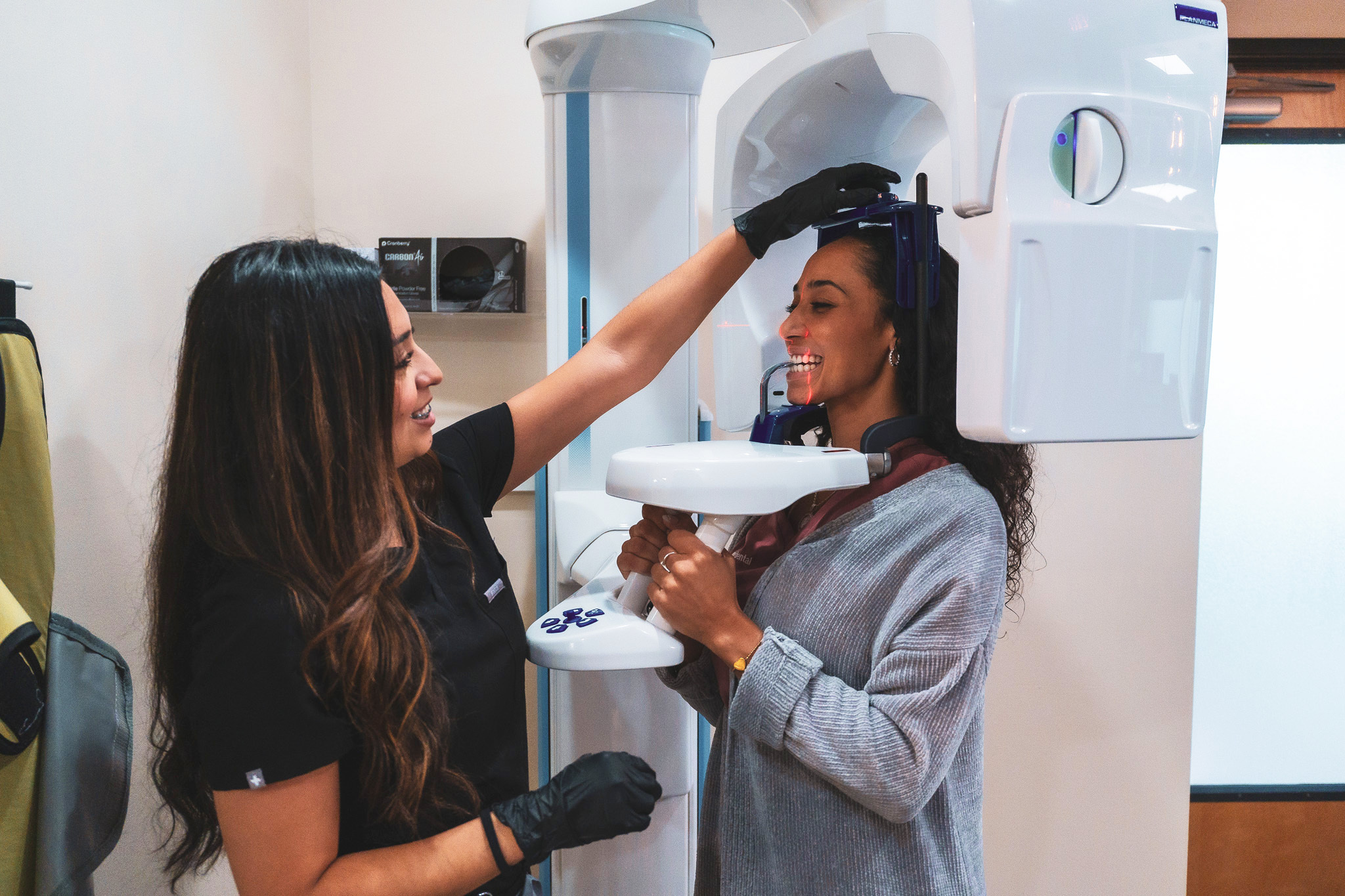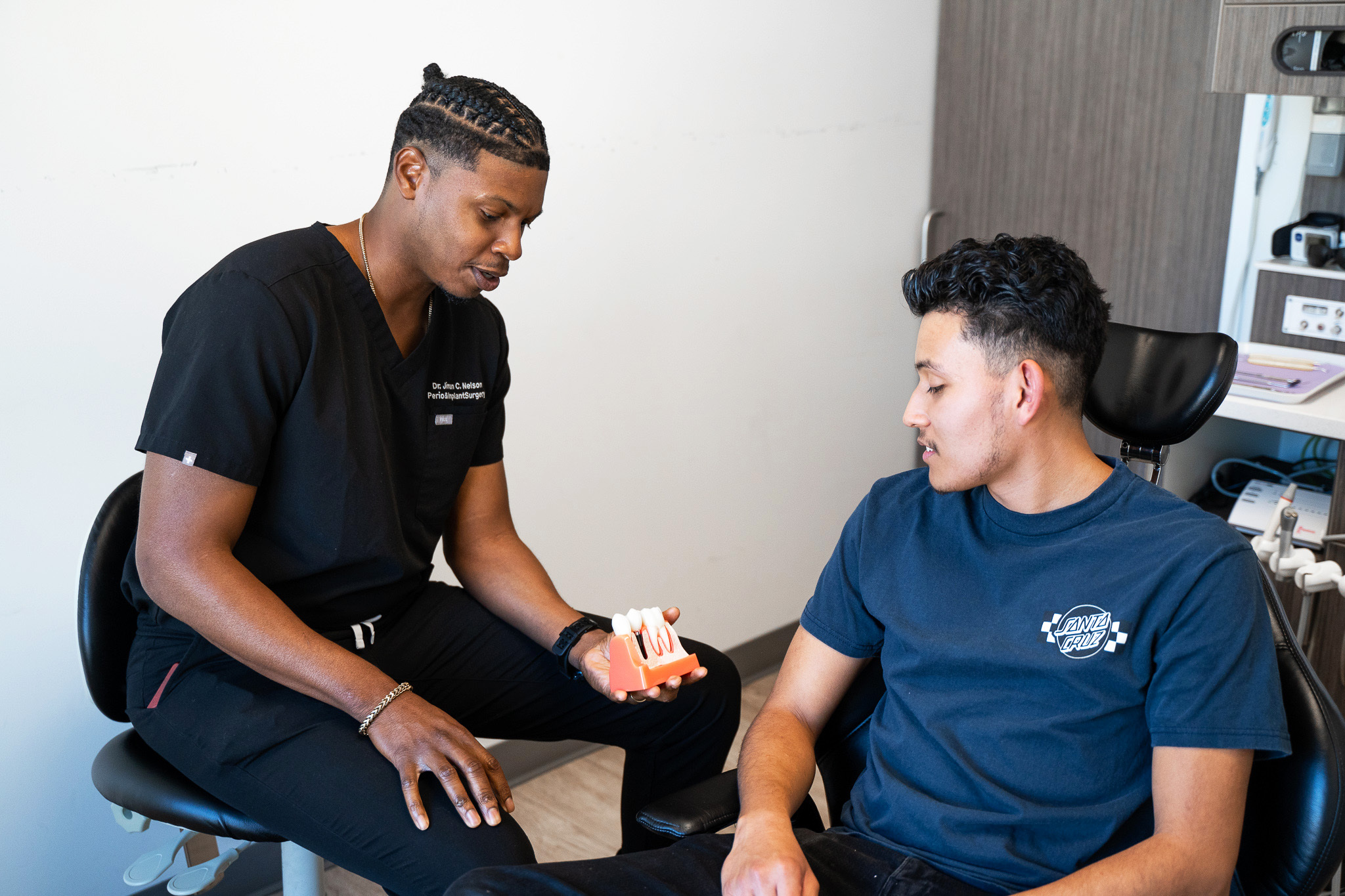Modified Bass Technique is a type of tooth brushing which is used by patients who suffer limited gum recession or dexterity. The brush has to be put in 45 degrees at the front surface of the teeth while the bristles are projected in the pockets which surround the tooth.
Oral hygiene instructions (OHI) help facilitate the modified bass technique which is a type of tooth brushing which is used by the patients who suffer limited gum recession or dexterity. The brush has to be put in 45 degree at the front surface of the teeth while the bristles are projected in the pockets which surround the tooth.
There is a small circular motion which is done using the bristles in the pockets. Such bristles are then swept in a gum line and in the biting surface of a tooth before brushing over an entire front surface. This same technique will be completed within the inside surface of a tooth. The toothbrush will be placed in the pocket using 45 degree and it will be completing small circles and then they have brushed away of the gum line on the biting surface of a tooth.
do you need Oral hygiene instructions?
This is an effective technique when it comes to brushing the teeth since it can remove biofilm and plaque properly. It can clean easily the area found under the gingival margin and it helps in controlling of periodontal infection. During this technique, the bristles are used in 45 degree in the long axis of the mouth. Since it is hard to place the brush on 35 degree, then placing it parallel on the teeth should be beneficial. The bristles should be placed slightly to ensure that they enter in the gingival sulcus with the embrasures. The brush should vibrate forth and back using short strokes up to 15 strokes for every position and continue cleaning other tooth. This option is recommended to clean proximal areas and cleaning of the cervical area found under the height of the contour of enamel. This is when the root of the tooth had been exposed.
This is a technique that works as Bass Technique but it has some modification so that it can remove the debris away of the embrasures better. Bristles are used in the same angles and apically just like in bass method but the bristles will be placed over the cervical part of a tooth and on the adjacent gingiva.
Technique used: it uses the same technique like that of Bass technique and it has slight modification for the occlusal movement together with short horizontal strokes. The forth and short back strokes are used using light pressure.
The technique is used when the patient suffers gingival recession for the gingival stimulation and it cleans large embrasures. It is also capable to remove biofilm and plaque made at cervical region.

Many people are suffering from plaque related diseases and gingivitis, even for the people who say that they clean their teeth regularly. It has been found out that the problem lies with the brushing technique used. Most of the time, dentist near me recommend the use of Modified Bass Technique to their patients but there are also other techniques that may be preferred depending on the situation of the patient. It has been found out that for the patients and other people to achieve highly recommended oral cleaning, they should learn highly recommended brushing skills. Dentists teach the Modified Bass Technique to their patients since it has been found out to remove plaque in high level especially on the gingival margin and this prevents periodontal lesions.
Modified Bass Technique had been proven to remove enough of the plaque compared to normal tooth brushing technique on lingual and buccal sites. Dentists agree that using Modified Bass Technique over to the normal tooth brushing is better in removing supragingival plaque. When patients start to use a better cleaning option like modified bass technique, then their oral hygiene will improve in general.
There are also many studies that have been done to compare Modified Bass Technique with other available tooth cleaning methods and most of the time; Modified Bass Technique was proven to be superior to others.
Visit us today at URBN Dental as a walk in patient or call us at 832-743-2989 for an appointment at a time of your choosing! Here is to permanent smiles and stronger teeth for all!
No Insurance? No problem.
© Copyright 2025 | Designed & SEO Optimized by The Doctors Marketing
Disclaimer: URBN Dental uses restorative materials such as Admira Fusion® by VOCO, which are free of BPA and Bis-GMA, and are not known to degrade into microplastics under normal oral conditions. While marketed as biocompatible and free of traditional plastic monomers, no dental material is guaranteed to be completely risk-free for all patients. This information is provided for educational purposes and does not constitute medical or regulatory advice.

Discover your perfect smile with a FREE Invisalign assessment.

Receive a complimentary 3D scan ($300 value) when you proceed with implant care.

Speak with our experts about your smile goals from the comfort of your home.
Discuss your smile goals with our experts—choose an in-office visit or a convenient 15-minute phone consult.

Quick, affordable care when you need it most.

Have questions about implants? Get personalized guidance in a brief phone call.